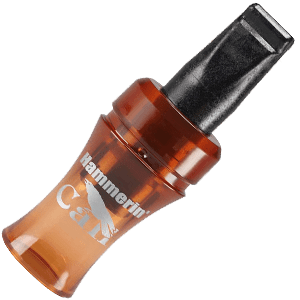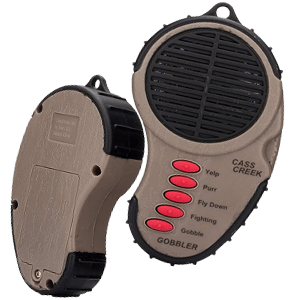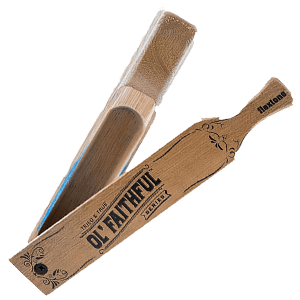As turkey season is commencing, it’s time you start practicing clucks, yelps, cuts, and cackles with a decent turkey call. If you know the importance of various mentor turkey books, turkey locator calls, and turkey decoys, you probably are an experienced one. They help you to attract a gobbler or a hen close to your target range and ensure a clean kill.

The different calls transmit different messages to a turkey, like a cackle associated with leaving the roost. The plan yelp of the hen is to communicate with a gobbler during mating season. However, the craw call and owl hoot mean shock call to a tom or gobbler and play a crucial role in locating them.
Overview of 6 Best Turkey Call
1. Primos Magnetic Box Turkey Call
Our Pick

2. H.S. Strut Crow Turkey Locator Call
Cheap & Best

3. Cass Creek Electronic Turkey Call
Best Budget

4. Mantis 25 Electronic Turkey Call
Most Versatile

5. Flextone Ol’ Faithful Box Turkey Call
Premium One

6. ESH Slate Turkey Pot Call
Three In One

Related Post:- Best Red Scope for Turkey Hunting
Related Post:- Best Turkey Hunting Book
1. Primos Magnetic Box Turkey Call
Our Pick

★Why You Choose This Turkey Call
- Magnetic Lid:- It is the most innovative patented magnetic hinge design in decades. The magnetic lid provides the perfect amount of pressure on the realistic cuts, purrs, and yelps which produce a correct call every time.

- Gobble Band:- The included gobble band holds the caller together and provides a back-and-forth motion with perfect tension. It produces a rapid gurgling sound without using the other hand. The sound of the caller is similar to the realistic gobbles of a male turkey.

- Compatibility:- This hook-up turkey call is usable single-handedly and requires no tuning. It creates a loud sound of a male wild turkey, which he uses primarily in the spring to let hens know his existence in the area.
- Material:- It is made with padauk mahogany walnut wood, which is excellent decay-resistant and very durable. Also, the puddle is removable for easy carrying and storage.
✔ Pros
- The super-strong magnet ensures stability
- Perfect mold for all kinds of people
- Detachable paddle for easy transportation
- Exerts perfect sounds when handled rightly
❌ Cons
- Not for novice hunters
- It doesn’t sound natural
The first on our list is Bushnell’s Primos magnetic turkey call with an innovative design and variety of gobble. This long-range turkey call works excellently to call a turkey from 100 to 150 yards away inside the dense forest and ranges up to 200+ yards in open fields. I like how handy and compact it is to adjust anywhere from your pocket to the backpack.
I also noticed the Primos Hunting Ol’ Betsy Slate Call, which is cheaper($12) and fair. However, It is not much louder and is a little uncomfortable to hold. On the other hand, the Primos magnetic box call costs $40 but features high-end performance and results on the field. Overall, very easy to use, has long-range calling, and is great for beginners and pro hunters.
2. H.S. Strut Crow Turkey Locator Call
Cheap & Best

★Why You Choose This Turkey Call
- Compatibility:- This is a compact design and mouth-blowing crow turkey call, which seems more like a mouth air horn. It makes the turkey create a shock gobble and come closer. The craw call works great after sunrise and before sunset. I suggest you blow clear and sharp to know the location of the turkeys without drawing their attention.
- Material:- It is built with a plastic material, so 100 percent water and decay-resistant. The design is compact enough to fit in a small-sized pocket. The mouthpiece has a textured black material with a nice end to keep it in your teeth for a long time.
✔ Pros
- Most affordable option
- Sturdy construction ensures durability
- Beginner-friendly
- You can produce a variety of sounds
❌ Cons
- Sound feels synthetic
- It doesn’t include instructions
The H.S. Strut Craw call is the best turkey mouth call, designed to induce turkey with a shock call. It creates a more natural and real crow call, for that you need to blow deeper and louder. It is easy to tune, pull the black mouthpiece out, and you will see the reed. You can slide it back and forth to tune it.
It will sound clear to the turkey nearby up to 80 yards in woodlands and up to 130 yards in open fields. Now, let’s talk about the price, which is just $6 and pays off a lot. If you turkey hunter realizes this can capitalize on a turkey’s reaction to the crow call, then I highly suggest it for you. Overall, the best turkey mouth call for beginners. I will also recommend it for both spring and fall turkey hunting seasons.
3. Cass Creek Electronic Turkey Call
Best Budget

★Why You Choose This Turkey Call
- Compatibility:- This is an ergonomic and pocket-sized turkey call that fits well in all hand shapes. The EZ thumb dial allows for on/off sound adjustment and one-hand use. It also has a belt clip to attach to your belt. It features five different sound qualities of a turkey, i.e., yelp, purr, playing down, fighting, and gobble.
- Material:- It is made of hard plastic, which is durable and sturdy. The 3 AAA batteries operate this electronic game call to produce a powerful sound. However, it is electronic so keep it away from water for long-lasting usage.
✔ Pros
- Ergonomic grip
- It can be used single-handedly
- The compact design fits anywhere
- Offers thumb dial sound adjustment
❌ Cons
- Distorts with high-volume
- Illegal in most states
It is the best turkey call for beginners with five different turkey sounds. It has a powerful speaker that projects the sound up to 200 yards. You can produce a high-pitched series of two yelps calling a gobbler to mate or a fly-down call with soft morning wake-up yelps accompanied by real wing beats as the hen leaves the roost.
If one sound doesn’t work, you can switch to the other depending on the season and timing. However, at half volume, it sounds perfect, but the sound distorts very much when you up the volume. Overall, it is compact, easy to operate, best turkey calls for a fall gobbler under $20.
4. Mantis 25 Electronic Turkey Call
Most Versatile

★Why You Choose This Turkey Call
- Compatibility:- It is an electric turkey call with an LCD screen readout and 25 different turkey calls. You can hold it in your hands or set it in the field using pivoting legs with a lock-in position. The convenient trigger sound activation button initiates the call. Also, a user can utilize the random repeat option for hands-free use during a calling session.
- Material:- The rigid plastic body feels sturdy and durable. It has a 4-way rubberized keypad call section that incorporates volume control and keeps in use for a long time while frequently changing the call. The body has an ergonomic design for user comfort.
✔ Pros
- Equipped with a rubberized keypad
- Can exert 25 types of calls
- It easily fits into your palm
- Amazing features at this price point
❌ Cons
- It doesn’t work beyond 100 yards
- Exerts a reverb effect
The Mantis 25 is the most versatile turkey call on our list. You can produce various call sounds like Barred Owl, Crow Call, Pileated Woodpecker, Red Tail Hawk, Coyote Howl, Keekee Run, Mating Yelps, Old Gobbler Yelps, and many more. However, It is not much louder, so best to use it within a 100-yard distance.
It is lightweight and compact for easy transport and carrying. I like the design and gripping, which is extremely good. If you are climbing on a tree to search a gobbler or entire flock while at the same time holding a gun, the hand lanyard won’t let it drop. Overall, it is a great deal under $30 for a beginner and experienced hunter. I will highly recommend using it in the open fields to make the most out of it.
5. Flextone Ol’ Faithful Box Turkey Call
Premium One

★Why You Choose This Turkey Call
- Compatibility:- It is a mid-sized and custom paddle-style turkey box call that works by friction and vibration. The two-sided, hand-tuned design produces a superior volume of two hens. If you move the paddle back and forth, keep it in contact with the box. Hold the box and lid lightly and correctly to generate louder turkey yelp, purr, and gobble.
- Material:- It is crafted with eucalyptus wood, highly durable, and resistant to rot and decay. It contains high oil, which naturally resists the influence of moisture. The mini boat paddle design makes it sturdy and compact. A screw holds the lid and box together tightly and allows free movement.
✔ Pros
- Bigger than what’s shown in the picture
- Amazing sound quality
- Beginner-friendly
- Works amazingly in longer distances and noisy conditions
❌ Cons
- Sweet Yelp doesn’t work
- Cheap construction[/alert-success]
The Ol’ Faithful Box Call is made in the USA by Eddie Salter “The Turkey Man”. He spent 50 years of his life hunting turkey and put his expertise into designing this best turkey box call. It is a perfect call to produce sharp, loud cutting sounds to excite and fire up gobblers.
It works excellent, especially over longer distances like 150 or 200 yards, and in noisy conditions. I also brushed Lynch Turkey Box Call (premium quality) and Quaker Boy Turkey Box Call (cheap). Both are lovely designs, but Ol’ Faithful Box Call is under budget and features quality material. It costs $30, which is worth paying for a beginner and experienced turkey hunter.
6. ESH Slate Turkey Pot Call
Three In One

★Why You Choose This Turkey Call
- Compatibility:- It is a combo pack of turkey calls with a pot call, box call, and 3-REED LATEX to produce different turkey sounds. However, it would help if you had practiced repeatedly to know the mechanism of each of them. All three are compact yet box call and slate call demands the use of both hands.
- Material:- The pot is made with plastic, which makes it water-resistant and highly durable even in harsh climates. The slate is well rugged and remains the same for an extended period. Moreover, the box call features great quality wood which is decay-resistant. Also, the quality wood striker is sturdy and works even better when it’s wet to deliver more realistic sounds.
✔ Pros
- Suitable for beginners as well as experienced hunters
- Refund policy if not satisfied
- Tree yelps are the best
- Dual side releases amazing sound
❌ Cons
- No instruction guide
- Poor striker
This is a very clean and well-built combo pack of turkey callers for patient hunters, that’s what you need for turkey hunting. If you are tired of using diaphragms and box calls, you can switch to pot calls. It comes packed with everything you need to get started. If you are a beginner, the proper printed instructions and links to video tutorials will help you use them.
I am so impressed with the tone and clean purrs and clucks of 3 reed latex which fits perfectly in your mouth. While using the pot, yelp volume still isn’t as loud for distance calling, but is very clear for 80 to 100 yards distance, or when you have a gobbler closer. Overall, excellent manufacturing and the best turkey calls for beginners. Also, you get a conditioner and sandpaper for cleaning the pot and striker.
Type Of Turkey Call
1. Box Calls
Box calls are the most popular type of turkey call among hunters. They are easy to use and produce a realistic sound that can attract turkeys from a distance. Box calls consist of a wooden box with a paddle that slides over a groove on the box’s top. The paddle is typically made of hardwood, and when it is moved back and forth over the groove, it produces a sound similar to a turkey’s yelps, clucks, and purrs.
How to use:
Hold the box call with one hand and place the paddle on the box’s top with the other hand. Slide the paddle back and forth over the box’s groove to produce the desired sound.
Pros: Produces loud and realistic sounds, is easy to use, and is versatile.
Cons: Can be bulky and heavy, may require two hands to use, and can be affected by weather conditions.
Slate Calls or Pot Call
Slate calls, also known as pot calls, are another popular type of turkey call. They consist of a slate or glass surface inside a pot, with a striker that is used to make contact with the surface to produce sounds. Slate calls produce a softer and more subtle sound than box calls, which can be effective when hunting in heavily wooded areas.
How to use:
Hold the pot call in one hand and the striker in the other. Gently tap the striker against the slate or glass surface to produce the desired sound.
Pros: Produces realistic sounds, is versatile, and is easy to use with practice.
Cons: Can be affected by weather conditions, requires maintenance (sanding or conditioning the surface), and may require two hands to use.
Diaphragm Calls:
Diaphragm calls, also known as mouth calls, are the most challenging type of turkey call to master. They consist of a latex or rubber reed that is placed in the hunter’s mouth. The reed is then manipulated by the tongue and breath to produce turkey sounds. Diaphragm calls produce a more realistic sound than other types of calls and are hands-free, making them ideal for hunters who need to keep their hands free for their gun or bow.
How to use:
Place the diaphragm call in your mouth, with the reed facing outward. Use your tongue and breath to manipulate the reed to produce the desired sound.
Pros: Hands-free, versatile, can produce a wide range of turkey sounds, compact and lightweight.
Cons: Can take time to learn how to use, may not produce as realistic sounds as box or pot calls, may not work well in wet weather.
Push Button Calls
Push button calls consist of a small box with a button on the top. When the button is pushed, it produces a sound similar to a turkey’s yelp or cluck. Push button calls are easy to use and can produce a variety of sounds, making them a versatile option for hunters.
How to use:
Hold the push button call in one hand and press the button with your thumb to produce the desired sound.
Pros: Easy to use, versatile, can produce a range of turkey sounds, compact.
Cons: May not produce as realistic sounds as other types of calls, and can be affected by weather conditions.
Wing Bone Calls
Wing bone calls are the oldest type of turkey call, dating back to the Native Americans. They are made from the wing bones of a turkey and produce a high-pitched sound that can be effective in attracting turkeys from a distance.
How to use
Hold the wing bone call between your thumb and fingers and blow into the end of the bone to produce the desired sound.
Pros: Produces unique sounds, hands-free, lightweight, and compact.
Cons: Requires preparation (cleaning and preparing the wing bone), can be difficult to learn how to use, limited range of sounds.
Expert Advice:- The best type of turkey call for you depends on your experience level, hunting style, and the terrain you are hunting in. For beginners, a box call or push button call may be the easiest to learn and use.
For hunters who prefer a hands-free option, diaphragm calls are the way to go. Slate calls are a good option for hunting in heavily wooded areas, while wing bone calls can be effective in open areas. It’s also important to practice with your call before the hunting season to ensure you can produce the desired sounds effectively.
How To Buy a Turkey Call From Starting to End
1. Determine Your Hunting Situation
The first step in choosing a turkey call is to consider your hunting situation. Are you hunting in a heavily wooded area or an open field? Are you hunting in the morning or afternoon? These factors can help you choose a call that is appropriate for your situation.
For example, if you’re hunting in a heavily wooded area, you may want a box call or a slate call, as these calls produce softer, more subtle sounds that are better suited for close-range hunting. If you’re hunting in an open field, a mouth call or diaphragm call may be better, as these calls can produce louder, more realistic sounds that can carry over long distances.
2. Consider Your Skill Level
Another factor to consider when choosing a turkey call is your skill level. Some calls, such as mouth calls and diaphragm calls, can be more difficult to use and require more practice to master. If you’re a beginner, you may want to start with a simpler call, such as a box call or slate call, and work your way up to more advanced calls as you gain experience.
3. Try Different Calls
The best way to choose a turkey call is to try out different types of calls to see which one you feel most comfortable with. Many outdoor retailers and hunting stores have demo calls that you can try before you buy, or you can ask other hunters to let you try out their calls.
When trying out different calls, pay attention to the sound quality and ease of use. Does the call produce a realistic turkey sound? Is it easy to use and control? Is it comfortable to hold or place in your mouth?
4. Read Reviews and Ratings
Before making a final decision, it’s also a good idea to read reviews and ratings from other hunters. This can give you a better idea of the pros and cons of each call, as well as any potential issues or drawbacks to consider.
Look for reviews on hunting forums, online retailers, and social media, and pay attention to comments from other hunters who may have similar hunting situations or skill levels as you.
5. Consider Your Budget
Finally, consider your budget when choosing a turkey call. As mentioned earlier, turkey calls can range in price from around $10 to over $200. While more expensive calls may be of higher quality and produce more realistic sounds, there are also plenty of affordable options that can work just as well.
Frequently Ask Questions
1. What is the best type of turkey call for a beginner?
A box call is often considered the easiest type of turkey call for beginners to learn. It produces a consistent sound and requires minimal movement to use effectively.
2. What is the difference between a friction call and a mouth call?
A friction call, such as a slate or glass call, is operated by rubbing a striker on a surface to produce sound. A mouth call, also known as a diaphragm call, is placed inside the mouth and operated by air pressure and tongue movement.
3. What is the best material for a turkey call?
This is largely a matter of personal preference, but popular materials for turkey calls include wood, acrylic, and aluminum.
4. Can a turkey call be used for other types of games?
While turkey calls are specifically designed to mimic the sounds of turkeys, they can sometimes be used to call in other game species such as deer or coyotes.
5. How important is it to practice with a turkey call before hunting?
Practicing a turkey call is crucial to becoming proficient with it. It can take time to develop the muscle memory and technique required to produce convincing turkey sounds, so it’s important to start practicing well before hunting season begins.
6. What is the range of a turkey call?
The range of a turkey call can vary depending on the type of call and the skill of the user. Some calls can be heard from several hundred yards away, while others may only be effective at close range.
7. How much should I expect to spend on a quality turkey call?
The price of a turkey call can vary widely depending on the material, brand, and features. A basic box call or mouth call can be found for as little as $10-$20, while higher-end calls can cost upwards of $100 or more.

 T-Shirts
T-Shirts Long Sleeves
Long Sleeves Hoodies
Hoodies Sweatshirts
Sweatshirts

 Baby Bodysuits
Baby Bodysuits
 Cap
Cap














